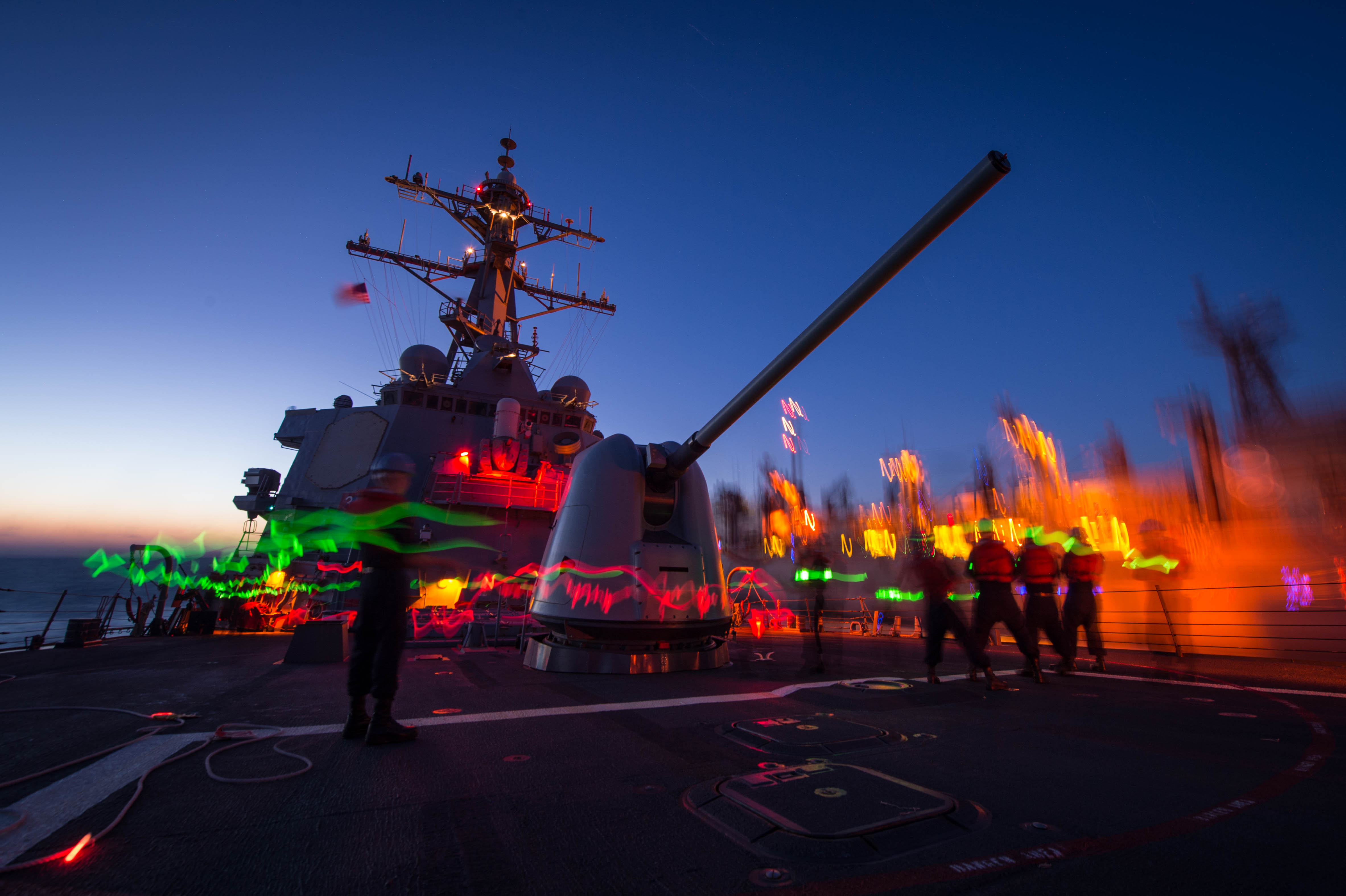
The Center for Strategic and Budgetary Assessments (CSBA) unveiled a plan on Monday that promises to squeeze the most out of the U.S. Navy’s existing surface assets — between now and 2025 when the Navy’s shipbuilding budget will be hard pressed by the Ohio-class replacement program’s (ORP) — while at the same time promising new capabilities such as lasers and modifying existing systems like air defense missiles to increase range and also be used for strike, the report’s author told reporters at a briefing on Monday.
Bryan Clark, a retired Navy officer, the former special assistant to the Chief of Naval Operations (CNO) and now a senior fellow at CSBA, said the report has been well received by the Navy’s Surface Warfare leaders.
“They are looking for alternatives [and] there is only so many ways to skin the cat to modernize the surface fleet,” he said.
In Congress, he said the reception also has been positive because it shifts the discussion from being purely defensive to also being on the offense in countering anti-access, area denial efforts of countries such as China and Iran. “Instead of just defending myself, I am attacking.”
Under the Navy’s current shipbuilding plans, a new surface combatant is not scheduled to enter the fleet until the 2030s.
The surface fleet is at a crossroads with the cancellation of programs such as the next generation cruiser (CG(X)) cruiser and the shift from the Littoral Combat Ship (LCS) to the 20 hull Small Surface Combatant (SSC). Yet the surface fleet is expected to carry out new missions such as ballistic missile defense (BMD) around Japan and in the Middle East and ward off Indian Ocean pirates as well as high-end missions in war.
The report’s key findings:
- Establish final specifications for Flight III of the Arleigh Burke destroyer (DDG-51)
- Determine the concept and requirements for a new small surface combatant” that can better protect itself, be used in offensive operations and carry out escort duties when needed in wartime and end rotational crew deployments for the remaining Littoral Combat Ships
- Implement a plan to sustain the cruiser capacity with the cancellation of CG(X)
- Decide the characteristics or acquisition approach for several surface fleet weapons and sensors
For example, looking at cruisers scheduled for phased modernization, the Navy needs to use them for high-end missions not security cooperation deployments as USS Cowpens was recently used. “We have to use them smarter than we use them today.”
One way to free more cruisers and destroyer for high-end missions, sea control, would be to shift Aegis ballistic missile defense (BMD) ashore in Japan as is being done in Romania and Poland. He estimated 18 vessels would become available.
“No other part of the Navy can do; no other part of the joint force can do” offensive sea control missions, Clark — a submariner — said about the surface fleet.
As one aspect of improved air defense, Clark said four or five Joint High Speed Vessels (JHSV) could be dedicated to that mission with a hybrid crew of sailors and civilians. Again, the report recommended regular deployments of crew, not rotational assignments for these vessels. Clark also suggested the Navy look at using part of the “national fleet” with hybrid crews to carry out mine counter measure missions (MCM), anti-submarine warfare (ASW) and surface warfare missions (SuW), which had been assigned to the LCS.
Clark said today’s layered approach to air defense provides a false sense of security to commanders and at a high cost.
The reports recommends the Navy, “implement a new defense AAW concept with only one shorter range layer to make more vertical launch system (VLS) space available for offensive weapons, increase the density of the air defense screen [lasers and electro-magnetic rail guns] and improve the cost exchange between U.S. air defense and enemy anti-ship cruise missiles.”
Clark said, “VLS is inherently finite” by changing the payload weight range can be increased and the system can be used for offense as well. This eliminates a trip to a port to refit the launch system.
As for the SSC, he said the report recommended using only one variant — not the two being used for the Littoral Combat Ship — with vertical launch system capabilities, 3-D radar and carry an anti-submarine warfare package.
Clark also said the report recommended back fitting VLS into some LCS after the design for the new small surface combatant is completed. He said in discussions with the two shipyards both said they could build the new combatant with those capabilities and begin work in 2019 if the design is a modified on the original Flight 0 LCS designs.
“We’re trying to take the fight to the enemy,” he said.
Clark said the plan for surface warfare ships is consistent with CNO Adm. Jonathan Greenert’s emphasis on “payloads over platforms” approach to meeting future challenges.





